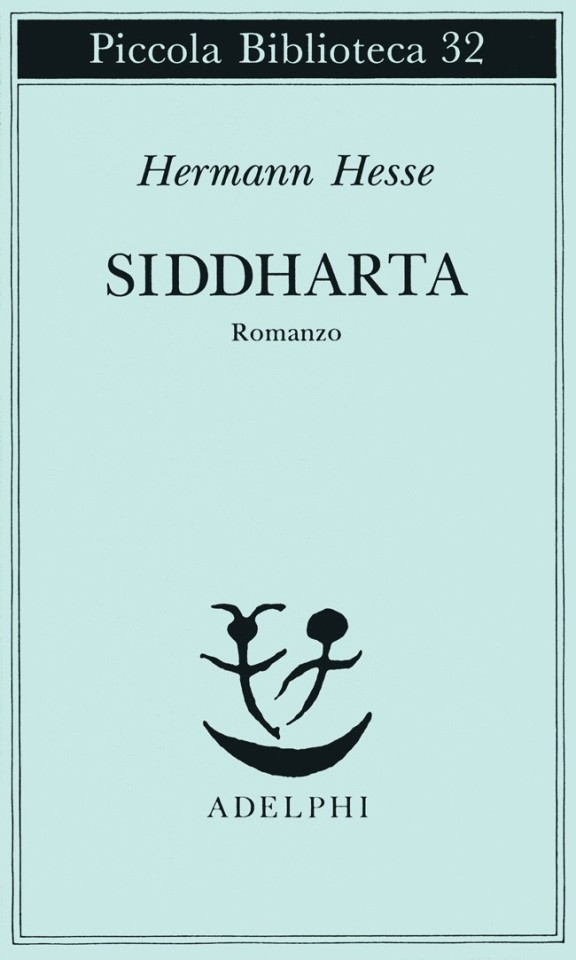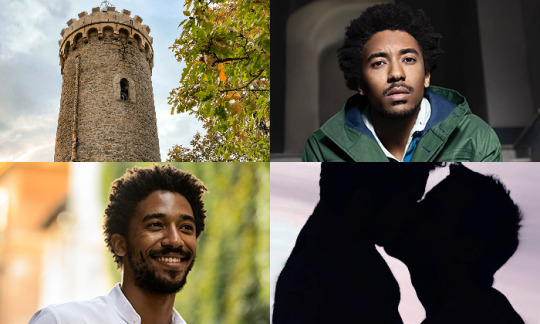#giambattista basile
Explore tagged Tumblr posts
Text

Warwick Goble (1862-1943), 'Grannonia and the Fox', ''Stories from the Pentamerone'' by Giambattista Basile, 1911 Source
#Warwick Goble#british artists#giambattista basile#vintage illustration#vintage art#color illustration#art nouveau
710 notes
·
View notes
Note
Hi. Not sure if you've answered this before, but do you have a list of books to recommend on fairytale/mythic analysis?
So I finally have a real response to this question, but it's LONG, be warned:
First, it depends what you want to get out of your folklore study, what lens you'd like to use for analysis. And second, it's important to know that the practice of folktale analysis has changed over time, especially in the last ~15 years or so as the scholarly consensus has evolved toward decolonization.
For example, the common historical starting place was Bruno Bettleheim's The Uses of Enchantment. Candidly, I haven't read it yet for a few reasons: 1) It focuses fairly exclusively on Western European fairy tales like those of Grimm, Basile, and Perrault. 2) It assumes the primary audience for such tales are children. 3) It's a white man's perspective, and there are already enough of those to go around. That said, it's considered a foundational text for folklore study, so I'll probably get to it eventually. There are some modern authors who might be considered scholarly successors of Bettleheim, like Maria Tatar. I haven't read her books yet but I know she's also a powerhouse of Western fairy tale analysis.
Some other popular perspectives include the works of Carl Jung and his protégés in psychoanalysis, Marie-Louise von Franz and Erich Neumann. These are wonderful sources for learning about depth psychology and the universal unconscious which causes certain motifs to recur in storytelling across the globe and over centuries. Another popular author in this field is Robert Bly, who dove deeply into the concept of the Shadow as it appears in folk tales.
But for me, my favorite sources have been a collection of feminist authors who were active in the late 80s and early 90s, notably Barbara Fass Leavy and the incomparable Clarissa Pinkola Estes. While their work is pretty firmly grounded in second-wave feminism and therefore not very intersectional as we understand it today, they were the first to begin exploring interpretations of folk tales outside of a patriarchal context. I personally refer to Leavy's In Search of the Swan Maiden and Estes' Women Who Run With the Wolves more than any other books.
A lot of the most current perspectives are only accessible via blogs, like Jeana Jorgensen AKA The Foxy Folklorist, who often explores fairy tales through a Queer lens. Another brilliant voice working today is Helen Nde of Mythological Africans, who is doing the long-overdue work of decolonizing African folklore.
And while all these sources will help you develop a framework for analysis, still one of the best things you can do is read the tales for yourself. One of my favorite series is that of Heidi Anne Heiner of Sur La Lune Fairy Tales, who has amassed impressive collections of folk tales of the same type from around the world, making comparison easy. She also provides excellent footnotes that offer context to the versions and translations she's selected, and every tale has a source.
Outside of that, I like to read regional collections from indigenous scholars and native speakers: some editors will even include a copy in the original language along with the English translation, thus allowing others to "check their work." One of my favorite folkorists like this is Inea Bushnaq, who collects Arab folktales and again provides accessible cultural context. It's important to remember that most oral folktales which are now available in English were first recorded by colonizers, so the versions we have may be edited, mistranslated, or even maliciously altered to suit Western tastes. This is why seeking out versions from actual members of indigenous communities is critical.
Right now, I'm reading The Japanese Psyche: Major Motifs in the Fairy Tales of Japan by Hayao Kawai, and I'm next going to try Oral World and Written Word by Susan Niditch. I tend to just go where the spirit moves me, journal a bit, go down a research rabbit hole about a particular topic... it's fun. But whatever you're looking to get out of your folk tale study, rest assured you will never run out of material!
#folklore#folk tales#fairy tales#mythology#bruno bettleheim#maria tatar#carl jung#marie louise von franz#erich neumann#robert bly#clarissa pinkola estes#barbara fass leavy#jeana jorgensen#foxy folklorist#helen nde#mythological africans#african folklore#inea bushnaq#arab folklore#japanese folklore#depth psychology#comparative mythology#jungian shadow#jungian psychology#sur la lune fairy tales#heidi anne heiner#brothers grimm#charles perrault#giambattista basile#asks
36 notes
·
View notes
Text

#sleeping beauty#aurora#fairy tale#dark aesthetic#dark academia#gothic#100 years#perceforest#14th century#charles perrault#17th century#brothers grimm#literature#giambattista basile#different narratives#drea.d.art#art#fanart
28 notes
·
View notes
Text


L’arnaque des contes de fées…
youtube
#cendrillon#cinderella's castle#cinderella girls#disney#charles perrault#aesthetic#gustave dore#giambattista basile#creative inspiration#creativity#keep it simple#i love books#books#synth punk#electronic body music#i love music#Youtube
7 notes
·
View notes
Text
Symbolisms in the world of fairy tales: the forest
Forests have often been the basis of a fairy tale. And we've already said that the forest is not just the forest. In all fairy tales ,and strangely enough in almost all the world, the forest represents the same thing, life.
Take Little Red Riding Hood, it's the reason why she has to go through the forest to get to her grandmother and meets the wolf.

It's the reason why in almost every story children get lost in the forest. Thumbelina gets lost in the forest, Hansel and Gretel get lost in the forest, Snow White gets lost in the forest, Rapunzel is hidden in the forest. Sleeping Beauty in Basile's version is asleep in the woods.
it's always the forest. This is because, once upon a time, when we were not yet very "civilized", one thing that was really done was tests to pass. In tribal times, we sent our children into the forest with a task: you get a bow and arrow and you have to come back, for example, with a wild boar. (or at least a dead animal). You had to go hunting. And if you come back with a dead animal, they would say "Enough , you have grown". Like the Spartans, for example. Over time this has evolved, and has become more and more symbolic. Little by little it transformed into something, first symbolic, then, even, into a story. The story of when, once upon a time, children had to face the forest alone. To prepare them for life with these stories.

One of the most beautiful examples is this buddist tale. The Siddharta (Buddah) was this child who lived completely peacefully in this family ,so wealthy and so powerful, that it allowed him to keep the world hidden from him. He spends his whole life without ever seeing reality.Everyone inside the building is not allowed to grow old,and if they get old,they are fired.Everyone was not allowed to have disabilities,otherwise they are thrown out. If you lose an eye you are canceled,you can no longer work there. If you have a cut you cannot show up at work, and you cannot cut yourself at work! The blood must never be shown to the child,and neither should violence. And so the child grows up seeing people all young (or at least adults)all beautiful all good all good, and he never sees anything wrong. everything is rich everyone is well off. One day ,while he is being taken inside a carriage from point A to point B, halfway ther's a problem with the carriage.He has the opportunity to peek out the window ,and sees the people outside. the people are made up of old people, beggars, the starving, the sick.
And he had never seen this before... and was shocked. After his encounter with suffering, Siddhartha left his palace and his family at night, and shed his noble clothes to dress poorly.
This is just the beginning of the WHOLE Siddharta's story, hope I explained it well so far♡
#fairy tales#red riding hood#snow white and the seven dwarfs#thumbelina#hansel and gretel#rapunzel#sleeping beauty#Giambattista Basile#spartan#tribal times#siddhartha#buddism#buddah#symbolism#fun facts#spilling facts
33 notes
·
View notes
Text
one of my pet peeves will always be the fact that people confuse Sleeping Beauty(Charles Perrault)and Little Briar Rose(Brothers Grimm)with Sun, Moon and Talia(Giambattista Basile)
#they’re not the same#deep breaths#different versions#different stories#fairy tales#fairy tale retelling#Sleeping Beauty#charles perrault#Little Briar Rose#brothers grimm#Sun Moon and Talia#giambattista basile
2 notes
·
View notes
Note
Regarding your Cinderella posts, I would even say that in Pentamerone's 17th Century's version, the Prince makes this thing of inviting the ladies to court to try the shoe iirc, and when Basile's heroine Zezolla arrives I think the shoe magically flies to her foot? I cant remember if this last part comes from Pentamerone.
Oh yes, this is all true! I had forgotten, since it's been about a year since I last read that story.
5 notes
·
View notes
Text
I recently finished reading "The Tale of Tales" by Giambattista Basile, and this part from the moral introduction of the sixth story on the fifth day is still stuck in my head, because DAMN.
"There are three species of idiots in the world, each of which deserves more than the other to be put in the oven: the first is those who do not know, the second is those who do not want to know, and the third those who think they know. The idiot about whom I am to talk to you is of the second species, who does not want knowledge to enter his noggin and thus hates those who teach it to him, trying, like a modern-day Nero, to cut off their bread supply."
8 notes
·
View notes
Text

Warwick Goble (1862-1943), 'Cianna and Her Brothers', ''Stories from the Pentamerone'' by Giambattista Basile, 1911 Source
#Warwick Goble#british artists#giambattista basile#vintage illustration#vintage art#color illustration#pigeons#children's books#art nouveau
207 notes
·
View notes
Text



༻✦༺ Petrosinello ༻✦༺
A gay reimagining of "Petrosinella" (a Rapunzel's variant) featuring Emanuele Mariotti as Petrosinello (Rapunzel's counterpart), Alberto Malanchino as the Prince and Pierfrancesco Favino as the Ogre (Mother Gothel, basically).
✧・゚: ✧・゚: :・゚✧:・゚✧✧・゚: ✧・゚: :・゚✧:・゚✧✧・゚: ✧・゚: :・゚✧:・゚✧ :・゚✧:・゚
"Petrosinella" (Little Parsley) was written in Neapolitan by Giambattista Basile and he included it in his 1634 collection of fairy tales "The Tale of Tales." It is an Aarne–Thompson type 310 "the Maiden in the Tower" tale, as well as the earliest recorded variant of "Rapunzel." The Brothers Grimm's more famous version was published almost two centuries later, in 1812.
You can read an English translation of "Petrosinella" here.
✧・゚: ✧・゚: :・゚✧:・゚✧✧・゚: ✧・゚: :・゚✧:・゚✧✧・゚: ✧・゚: :・゚✧:・゚✧ :・゚✧:・゚
Here you can find the whole list of my Gay Tales!
#fairy tales#gay fairy tales#gay tales#petrosinello#petrosinella#giambattista basile#the tale of tales#lo cunto de li cunti#pentamerone#rapunzel#brothers grimm#emanuele mariotti#alberto malanchino#alberto boubakar malanchino#pierfrancesco favino#moodboard#aesthetics
30 notes
·
View notes
Text
The Trials Of Young Corvetto is delightfully gay; at least in the Parcast Network’s version. Listen yourself and tell me I’m wrong:
https://open.spotify.com/episode/5AE9vNej7fN2SkTMM4DNC7?si=81KVeuJERxWF7Zfpnf-Beg&context=spotify%3Ashow%3A2OIRaDoDPKx77wz1945ihy&t=2494
#gay fairy tales#kings and boys#fairy tales#Giambattista Basile#Spotify#gay#lgbtqia+#stories#storytelling#podcast#parcast
2 notes
·
View notes
Text



11 notes
·
View notes
Note
Hi!
There’s a good chance you are already aware of it, but there is a recent film based on Basile’s Cunto de li Cunti. It’s called Tale of Tales, it’s an italian-french production from 2015, and it adapts (surprisingly very faithfully) the tales of the Flea, the Doe and the Flayed Old Woman.
I figured it could interest you. Keep up the good work!
Thank you!
And indeed I know of this movie! I heard all about it when it got released, the trailer was going around and there were articles in magazines - in fact, it was one of the thing that led me to explore further the Tale of Tales (before that I only/mostly knew about the Facetious Nights).
That being said, despite wanting to watch it at the time, I unfortunately did not had time... and I still haven't watched it fully, which is a shame because it looks so good, and this is one of the rare pieces of media to acknowledge the Italian literary fairytales.
I should definitively try to watch the movie one of these times - thanks for reminding me of its existence X)
4 notes
·
View notes
Text
Re Chicchinella e l'uovo d'oro
Una satira della società e dei suoi costumi del tempo del Basile: tra il grottesco e il paradosso la sventura di Re Chicchinella SALERNO – Il cast dello spettacolo Re Chicchinella sarà protagonista del prossimo appuntamento di Giù la maschera, in programma venerdì 14 marzo alle ore 18.30 nel foyer del Teatro Municipale Giuseppe Verdi in via Roma. L’incontro con il pubblico e la stampa con Giù la…
#Emma Dante#Giambattista Basile#Locunto de li Cunti#Re Chicchinella#Teatro Municipale Giuseppe Verdi di Salerno
0 notes
Video
youtube
L'Orco nelle fiabe di Basile: Come nasce il mostro del Pentamerone
1 note
·
View note
Text
La Scortecata e Il Canto della Sirena: Due Spettacoli Teatrali di Emma Dante al Teatro Vascello di Roma. A cura di Alessandria todfay
Dal 19 novembre al 1° dicembre, il Teatro Vascello ospita due straordinarie produzioni che rivisitano favole popolari attraverso una lente moderna
Dal 19 novembre al 1° dicembre, il Teatro Vascello ospita due straordinarie produzioni che rivisitano favole popolari attraverso una lente moderna La stagione teatrale 2024-2025 del Teatro Vascello di Roma propone due opere firmate da Emma Dante, che, con la sua visione registica unica, porta in scena “La Scortecata” e “Il Canto della Sirena”. Tratti rispettivamente da “Lo cunto de li cunti” di…
#Abbonamenti#Alessandria today#Amore impossibile#Arte drammatica#biglietteria Teatro Vascello#Biglietti#card Zefiro#Commedia dell&039;arte#Coop La Fabbrica dell’Attore#Cultura#cultura in Italia#drammaturgia contemporanea#Emma Dante#Emozioni#Favole#Fiabe#fiabe moderne#Giambattista Basile#Google News#H.C. Andersen#Il Canto della Sirena#innovazione teatrale#italianewsmedia.com#La Scortecata#Monteverde.#PERFORMANCE#Pier Carlo Lava#Poesia#produzione teatrale#promozione teatro
0 notes